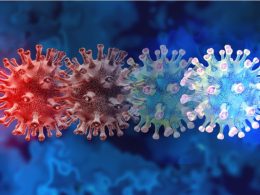Introduction
Medical waste, also known as healthcare waste, includes any materials generated during medical procedures or patient care that may be contaminated or pose a health risk. Unlike general waste, medical waste has the potential to spread infections, injure workers, or contaminate the environment if not managed correctly.
Proper management of medical waste is essential for maintaining a safe and hygienic environment in healthcare facilities. Incorrect disposal can lead to infections, injuries, and environmental pollution. Hospitals, clinics, laboratories, and pharmacies generate different types of medical waste, each requiring specific handling, treatment, and disposal procedures. In this article, we will explore the main types of medical waste and provide guidance on how to dispose of each safely, while ensuring compliance with regulations.
Effective medical waste management is vital not only to meet regulatory requirements but also to safeguard the health of medical staff, patients, and the wider community. Understanding the types of medical waste and applying appropriate disposal methods is a key part of maintaining safe hospital and clinical operations. In this article, we’ll cover the main categories of medical waste, how to identify them, and the best practices for safe disposal.
Types of Medical Waste and How to Dispose of Each Safely
1. Infectious Waste
Infectious waste is contaminated with blood, bodily fluids, or other pathogens that can cause disease. Common examples include:
- Blood-stained bandages and gauze
- Used gloves and gowns
- Laboratory cultures and specimens
- Swabs and other disposable medical items
Disposal Method: Infectious waste should be collected in clearly marked red bags or containers. It is usually treated using autoclaving, chemical disinfection, or other approved medical waste treatment methods before final disposal. Staff handling infectious waste should wear appropriate personal protective equipment (PPE) and follow strict infection control protocols.
Fact: Proper medical waste disposal prevents the spread of infectious diseases and protects healthcare workers.
2. Sharps Waste
Sharps waste includes objects capable of puncturing or cutting the skin. This type of waste is particularly hazardous due to the risk of injury and infection. Examples include:
- Needles and syringes
- Scalpel blades
- Broken glass vials
- Lancets
Disposal Method: Sharps waste must be placed in puncture-resistant, leak-proof containers clearly labelled with a biohazard symbol. Containers should never be overfilled, and needles should not be recapped. Once full, sharps containers are sent for incineration or sterilisation depending on local regulations.
Tip: Safe Sharps waste disposal is a critical part of hospital waste management, reducing the risk of transmitting infections like HIV or hepatitis.
3. Pathological Waste
Pathological waste includes human tissues, organs, body parts, and fluids removed during surgery or autopsy. Common examples are:
- Surgical tissues
- Biopsy samples
- Anatomical specimens
Disposal Method: This waste must be collected in leak-proof containers and transported to authorised facilities. Treatment often involves incineration or other specialised medical waste treatment methods to ensure safe destruction of human tissues.
Note: Pathological waste should never be mixed with general waste or recycled.
4. Pharmaceutical Waste
Pharmaceutical waste includes expired, unused, or contaminated medicines and vaccines. Examples include:
- Expired antibiotics or painkillers
- Chemotherapy drugs
- Expired vaccines
Disposal Method: Pharmaceutical waste should be segregated and stored securely until treatment. High-temperature incineration or chemical neutralisation is often used to ensure drugs do not contaminate the environment or pose a risk to public health.
Fact: Proper handling of pharmaceutical waste is an essential aspect of effective medical waste management.
5. Chemical Waste
Healthcare facilities also generate chemical waste from laboratory reagents, disinfectants, and cleaning agents. Examples include:
- Laboratory solvents and reagents
- Disinfectant residues
- Cleaning chemicals
Disposal Method: Chemical waste must be neutralised or treated according to its composition before disposal. Licensed medical waste management providers help ensure that chemical waste is safely segregated, labelled, and processed.
Tip: Always follow safety data sheets (SDS) and local disposal regulations to avoid chemical accidents.
6. Cytotoxic and Cytostatic Waste
Cytotoxic waste is generated from chemotherapy and other medications that can damage cells. Examples include:
- Cytotoxic drug vials
- PPE used during administration of chemotherapy
- Contaminated IV bags or tubing
Disposal Method: Cytotoxic waste requires strict segregation and is typically treated through high-temperature incineration. Proper handling and training are essential to prevent exposure to hazardous chemicals.
Fact: Effective hospital waste management includes careful handling of cytotoxic and cytostatic materials to protect staff and patients.
7. General Non-Hazardous Waste
Not all medical waste is hazardous. General non-hazardous waste includes:
- Paper and cardboard
- Food scraps
- Packaging from medical supplies
Disposal Method: General waste can be safely disposed of through standard municipal waste systems. However, it should never be mixed with infectious, sharps, or chemical waste to prevent cross-contamination.
Best Practices for Medical Waste Disposal
Safe medical waste disposal involves more than separating waste into categories. Healthcare facilities should implement the following practices:
- Segregation at Source: Separate waste into infectious, sharps, pharmaceutical, chemical, and general categories at the point of generation.
- Use of Proper Containers: Ensure all bags, bins, and sharps containers are leak-proof, puncture-resistant, and clearly labelled.
- Staff Training: Personnel should be trained in handling, storage, and disposal procedures.
- Record Keeping: Maintain logs of waste generation, treatment, and disposal for regulatory compliance.
- Use Licensed Providers: Partner with accredited medical waste management companies such as Initial Australia to ensure safe collection, treatment, and disposal.
Conclusion
Medical waste, if mismanaged, can pose serious health and environmental risks. By understanding the types of medical waste and following proper disposal procedures, healthcare facilities can protect their staff, patients, and the community. From infectious and sharps waste to pharmaceutical and chemical waste, each type requires specific handling and treatment to ensure safety.
Adhering to best practices in medical waste management and collaborating with expert providers for medical waste disposal ensures compliance with regulations and creates a safer healthcare environment. For healthcare facilities seeking guidance, Initial Australia offers professional solutions for safe and compliant medical waste disposal, covering sharps, infectious materials, pharmaceuticals, and hazardous chemicals. Safe disposal is not just a regulatory requirement—it’s a responsibility towards the health and safety of all.











